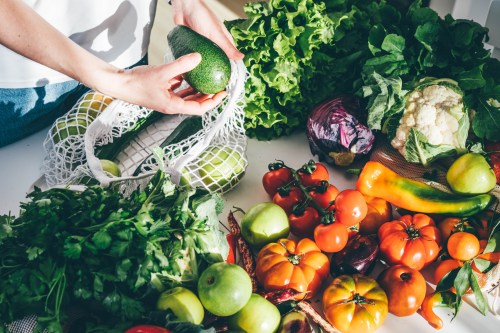Yes, Adding Salt to Coffee To Neutralize the Bitterness Is a Thing—But Should You?
What to know about the trend of putting salt in coffee for balancing the flavor and bitter notes, including health concerns.

My fellow coffee lovers likely have their preferences for their go-to cups of brew down pat. But for those who may be interested in experimenting—as well as people who want a caffeine fix, but find coffee to be a bit too bitter for their liking—there’s one hack that may be new to you: adding salt to coffee.
Experts in This Article
coffee expert and co-owner and founder of Bean &
There are a few key insights worth knowing before you start to sprinkle on the salt, including which types of coffee are the best fit and how much salt you should really use. Below, Jiyoon Han—a barista, certified Q grader (aka a sommelier of coffee), and CEO and co-founder of Bean & Bean Coffee Roasters in New York City—shares the ins and outs of the trend.
5 FYIs about adding salt to coffee
1. It works best to reduce bitterness
Whether you find all coffee to be too bitter for your palate or if you’re simply faced with a less-than-delicious cup, adding a bit of salt can help balance things out. “The function of adding salt to coffee is purely to reduce the perception of bitterness,” Han explains. “It won’t enhance any other flavors in coffee or make a bad cup of coffee taste any better.” Moreover, she notes that astringency will still be there.
“The function of adding salt to coffee is purely to reduce the perception of bitterness… [But] bitterness is an essential component of coffee’s flavor profile—the same goes for beer and chocolate—and some bitterness is a good thing,” Han says.
Yet she also adds the caveat that removing all bitterness shouldn’t be your end goal. “Bitterness is an essential component of coffee’s flavor profile—the same goes for beer and chocolate—and some bitterness is a good thing,” Han says.
2. It’s ideal for limited roasts and styles of coffee
“This salt trick is most noticeable with really bitter coffee—think super dark diner instant coffee,” Han says. On the other hand, she says that adding salt to light or medium roasts is unlikely to yield any benefit since the inherent bitterness won’t be there. Even worse, you’ll run the risk of tasting the salt with these roasts.
In addition, Han suggests limiting the salt hack to drip coffee and cold brew only. “It might also work with a very bitter espresso, but you’ll need to be very careful with how much salt you add since an espresso is very small and it’ll be easy to over-salt,” she cautions.
3. It can reduce the need for additives
Don’t like the taste of black coffee? In case you rely on additives like milk and sugar to enjoy your brew, a bit of salt may help limit your desire to use a heavy hand with the extras. “By reducing the bitterness in coffee, adding salt could be a healthy alternative for people who are looking to cut out the amount of cream or sugar they add to their coffee,” Han posits. In the long run, reducing your intake of sweeteners can work to your advantage—especially if you drink coffee daily (or multiple times a day). But same goes for salt.
4. A little salt goes a long way
You don’t want to end up with salty coffee, so it makes sense to start with a smidge and build your way up. “It only takes a tiny amount of salt to mitigate bitterness—about .3 to .5 grams of salt per 350 milliliters (about 12 ounces) of coffee,” Han says. “Add just a few grains at a time—so the absolute smallest pinch you can manage—and taste until you get the desired effect.”
It only takes a tiny amount of salt to mitigate bitterness—about .3 to .5 grams of salt per 350 milliliters (about 12 ounces) of coffee,” Han says. “Add just a few grains at a time—so the absolute smallest pinch you can manage—and taste until you get the desired effect.”
Those who are exacting about their coffee creations may prefer to make a precise saline solution to abide by her measurement suggestions. In this case, Han advises sticking to an 80/20 ratio of water to salt and using a dropper to add the solution directly to your cup. “That way, you’ll know that for every gram of water you add to your coffee, you’re adding .2 grams of salt,” she shares. “Of course, you’ll need to use a fairly precise digital scale to weigh out how much you’re adding.”
5. Any salt will suffice, but you can upgrade with coffee salt
Han says that any standard salt will get the job done. (If you have fancy sea salts in your pantry, she says you can save them for other culinary creations.) That said, if you want to go beyond masking bitterness by boosting the flavor profile of your cup, you can invest in salts made specially for coffee. For instance, Osmo Salt and Chamberlain Coffee recently collaborated on a line of three coffee-enhancing flavored salts—hazelnut, caramel, and cinnamon bun—which can elevate standard drip coffee or lattes by introducing slight but discernibly delectable hints of flavor.
Sign Up for Our Daily Newsletter
Get all the latest in wellness, trends, food, fitness, beauty, and more delivered right to your inbox.
Got it, you've been added to our email list.










